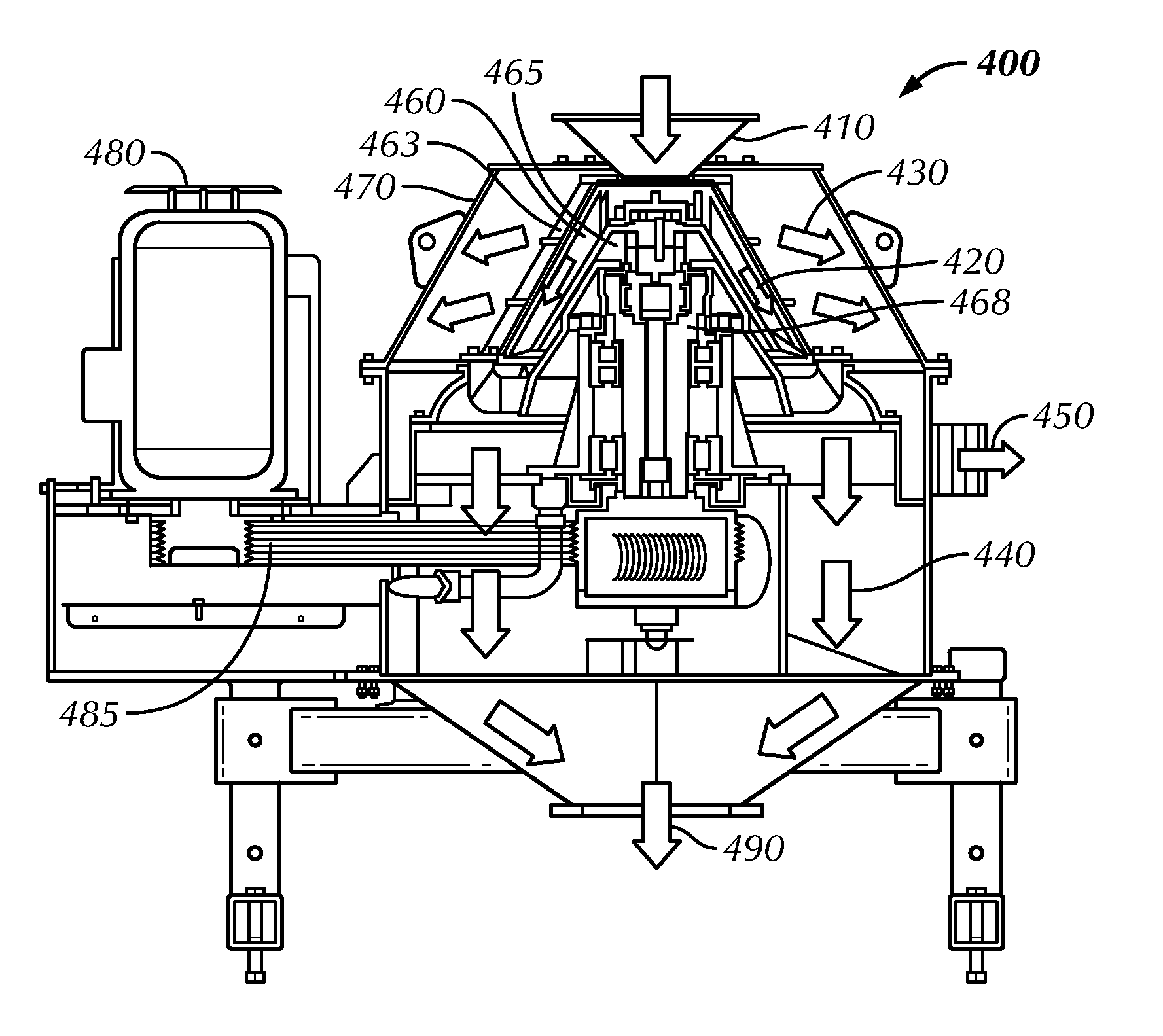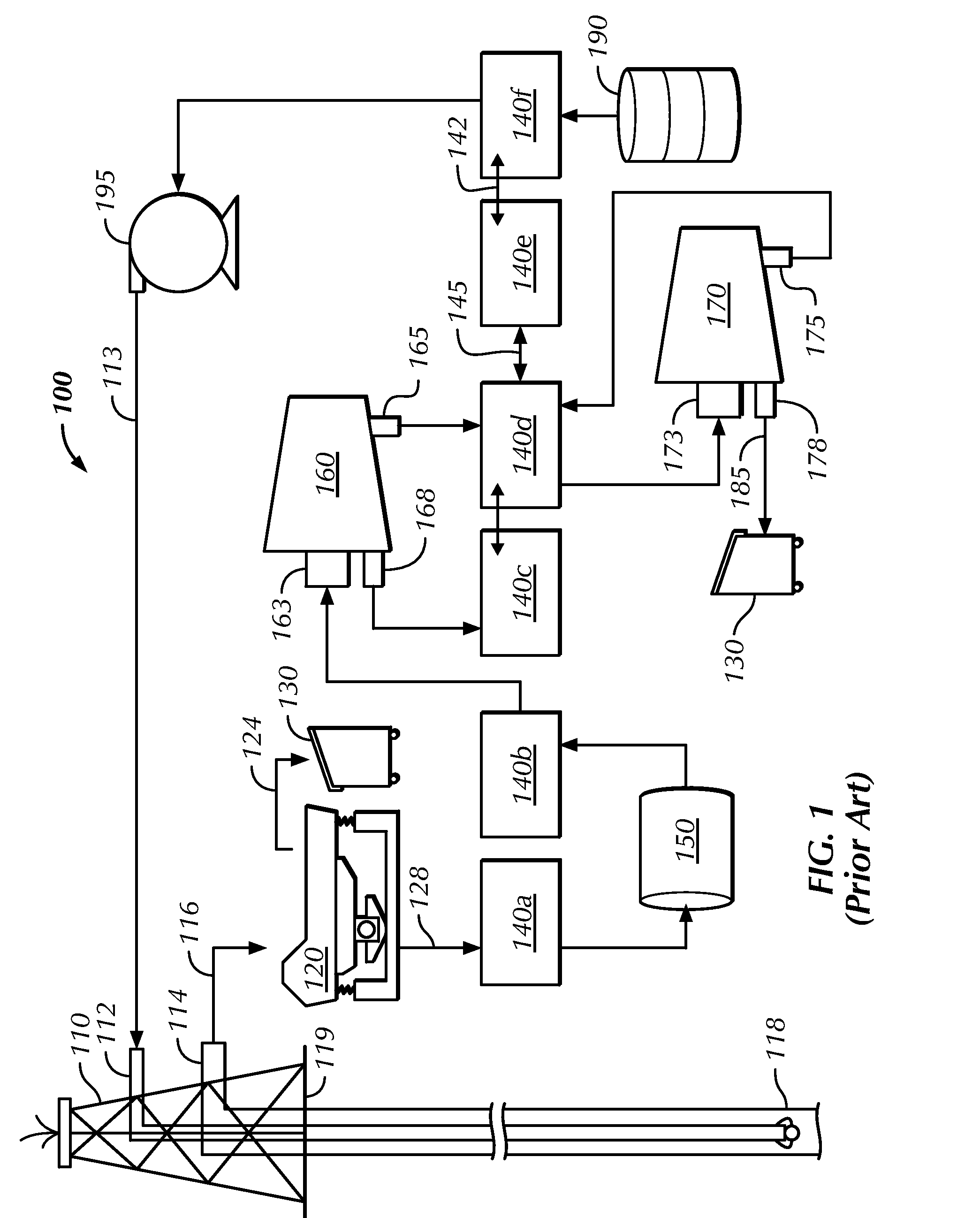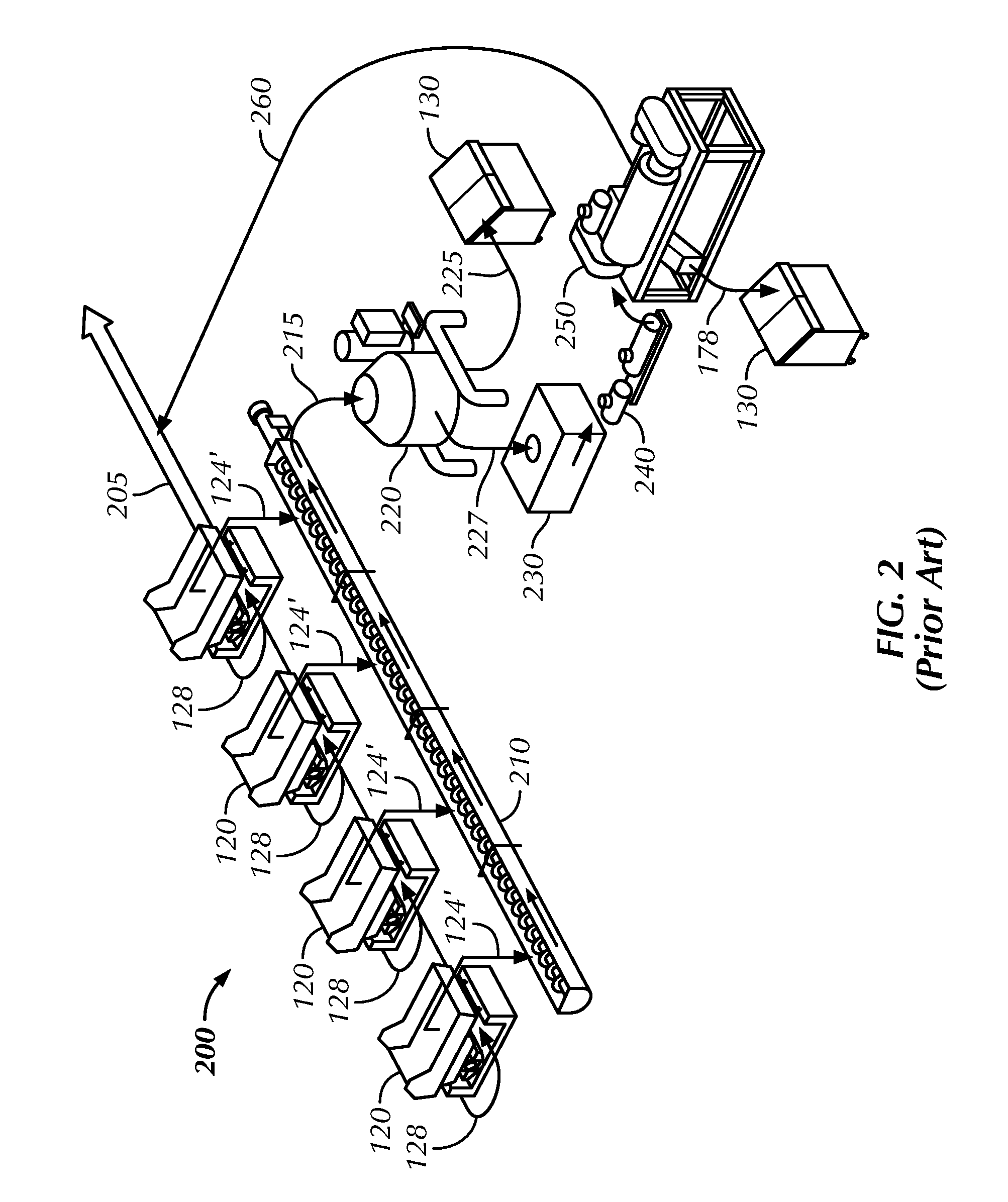Method of Solids Control and Fluid Recovery in Drilling Operations
a drilling operation and solids control technology, applied in the direction of filtration separation, separation process, borehole/well accessories, etc., can solve the problems of high drilling difficulty, high cost, and need for new replacement mud, and achieve the effect of reducing the number of drilling problems
- Summary
- Abstract
- Description
- Claims
- Application Information
AI Technical Summary
Benefits of technology
Problems solved by technology
Method used
Image
Examples
Embodiment Construction
[0032]Described herein is a method of solids control on a drilling rig which results in increased efficiency of solids disposal, cleaner mud recycling, and methods that keep breakdowns in solids control equipment from affecting rig operations.
[0033]Typical rig operations have a plurality of shakers which out feed at approximately ten and a half feet or more above grade. The inventor utilizes a large collection hopper with an integrated auger in the bottom of the hopper which connects to a hard-piped transport auger feeding a vertical dryer. The bottom of the hopper is sloped at least thirty degrees toward the middle where the auger is positioned to effectively empty cuttings from the entire hopper. The hopper in the preferred embodiment has sides no more than six and a half feet above grade, a length in excess of twenty-four feet, and a width of approximately six feet.
[0034]An adjustable cover spans at least the length of the hopper and exceeds the width of the hopper on at least on...
PUM
| Property | Measurement | Unit |
|---|---|---|
| Angle | aaaaa | aaaaa |
| Length | aaaaa | aaaaa |
| Angle | aaaaa | aaaaa |
Abstract
Description
Claims
Application Information
 Login to View More
Login to View More - R&D
- Intellectual Property
- Life Sciences
- Materials
- Tech Scout
- Unparalleled Data Quality
- Higher Quality Content
- 60% Fewer Hallucinations
Browse by: Latest US Patents, China's latest patents, Technical Efficacy Thesaurus, Application Domain, Technology Topic, Popular Technical Reports.
© 2025 PatSnap. All rights reserved.Legal|Privacy policy|Modern Slavery Act Transparency Statement|Sitemap|About US| Contact US: help@patsnap.com



